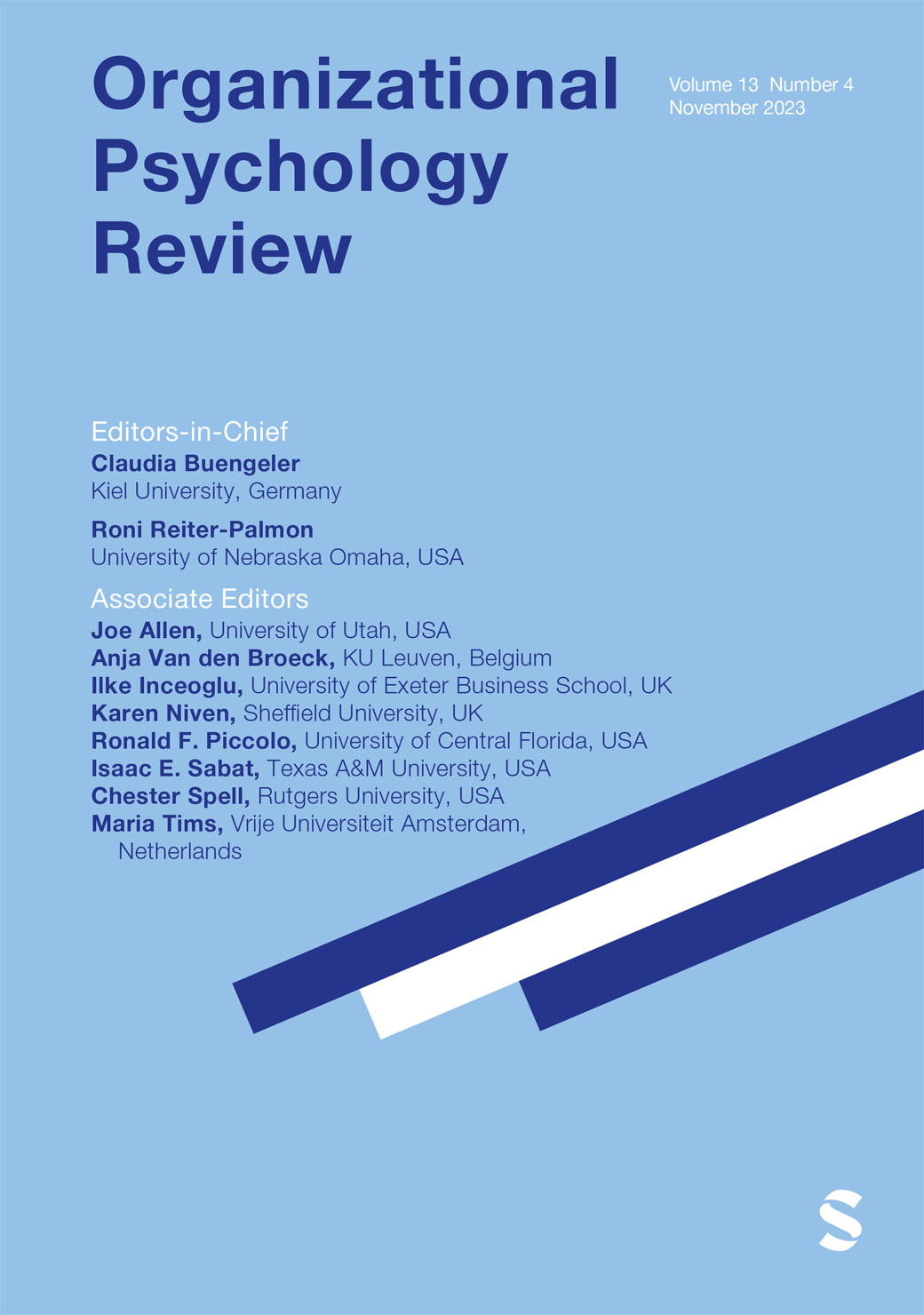The key features of workplace meetings: Conceptualizing the why, how, and what of meetings at work
IF 7.1
1区 心理学
Q2 MANAGEMENT
引用次数: 4
Abstract
Given the focal role that group and team meetings play in shaping employees’ work lives (and schedules), the scarcity of conceptual and empirical attention to the topic in extant organizational psychology research is a major oversight that stalls scientific understanding of organizational behavior more broadly. With the explosion of meetings in recent years, in part due to the COVID-19 pandemic, some even wonder why organizational psychology has not already figured out meetings from both a science and practice perspective. The purpose of this paper is to synthesize the extant literature on the science of workplace meetings and sort the works by identifying the key features of the meeting phenomenon. The five key features of workplace meetings identified include Leading, Interacting, Managing Time, Engaging, and Relating. We couch these features within a larger framework of how meetings are the intersection of collaboration in organizations and indispensable to organizational success. Against this conceptual backdrop, we reviewed a total of 253 publications, noting opportunities for future research and discussing practical implications. Given the focal role that group and team meetings play in shaping employees’ work lives (and schedules), the scarcity of conceptual and empirical attention in extant organizational psychology research is a major oversight that stalls scientific understanding of organizational behavior more broadly. With the explosion of meetings that has occurred in recent years, in part due to the COVID-19 pandemic, some even wonder why organizational psychology has not already figured out meetings from both a science and practice perspective. The purpose of this paper is to review the literature on the science of workplace meetings by identifying the core features of the phenomenon and sorting the extant literature along these features. The five core features identified include leading, interacting, managing time, engaging, relating. We couch these features within a larger framework of how meetings are the intersection of collaboration in organizations and a major key to organizational success. Against this conceptual backdrop, we reviewed a total of 253 publications, noting opportunities for future research and discussing practical implications. We conclude our review with an overview of the special issue on workplace meetings, which is an overt attempt to launch research that will fill the theoretical and conceptual gap in the science of meetings.工作场所会议的主要特征:概念化工作中会议的原因、方式和内容
鉴于小组和团队会议在塑造员工的工作生活(和日程安排)方面发挥着重要作用,现有组织心理学研究中缺乏对该主题的概念和实证关注,这是阻碍更广泛地科学理解组织行为的一个主要疏忽。随着近年来会议的激增,部分原因是新冠肺炎大流行,一些人甚至想知道为什么组织心理学还没有从科学和实践的角度来解决会议问题。本文的目的是综合现存的关于工作场所会议科学的文献,并通过识别会议现象的主要特征来对作品进行分类。确定的工作场所会议的五个关键特征包括领导、互动、管理时间、参与和关联。我们将这些特征放在一个更大的框架内,即会议是组织中协作的交叉点,也是组织成功不可或缺的因素。在这一概念背景下,我们审查了总共253份出版物,指出了未来研究的机会,并讨论了实际意义。鉴于小组和团队会议在塑造员工的工作生活(和时间表)方面发挥着重要作用,现有组织心理学研究中缺乏概念和实证关注是阻碍更广泛地科学理解组织行为的一个主要疏忽。随着近年来会议的激增,部分原因是新冠肺炎大流行,一些人甚至想知道为什么组织心理学还没有从科学和实践的角度来解决会议问题。本文的目的是通过识别工作场所会议现象的核心特征并根据这些特征对现有文献进行分类,来回顾有关工作场所会议科学的文献。确定的五个核心特征包括领导、互动、管理时间、参与和关联。我们将这些特征放在一个更大的框架内,即会议是组织合作的交叉点,也是组织成功的主要关键。在这一概念背景下,我们审查了总共253份出版物,指出了未来研究的机会,并讨论了实际意义。在结束我们的综述时,我们概述了关于工作场所会议的特刊,这是一次公开的尝试,旨在启动研究,填补会议科学的理论和概念空白。
本文章由计算机程序翻译,如有差异,请以英文原文为准。
求助全文
约1分钟内获得全文
求助全文
来源期刊

Organizational Psychology Review
Multiple-
CiteScore
10.00
自引率
1.60%
发文量
25
期刊介绍:
Organizational Psychology Review is a quarterly, peer-reviewed scholarly journal published by SAGE in partnership with the European Association of Work and Organizational Psychology. Organizational Psychology Review’s unique aim is to publish original conceptual work and meta-analyses in the field of organizational psychology (broadly defined to include applied psychology, industrial psychology, occupational psychology, organizational behavior, personnel psychology, and work psychology).Articles accepted for publication in Organizational Psychology Review will have the potential to have a major impact on research and practice in organizational psychology. They will offer analyses worth citing, worth following up on in primary research, and worth considering as a basis for applied managerial practice. As such, these should be contributions that move beyond straight forward reviews of the existing literature by developing new theory and insights. At the same time, however, they should be well-grounded in the state of the art and the empirical knowledge base, providing a good mix of a firm empirical and theoretical basis and exciting new ideas.
 求助内容:
求助内容: 应助结果提醒方式:
应助结果提醒方式:


